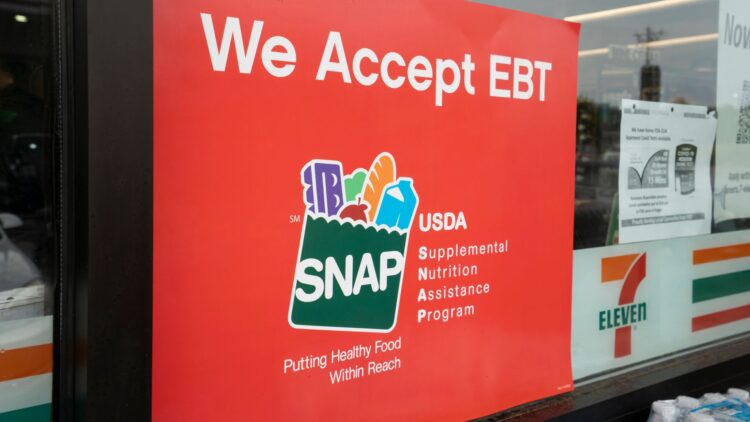As November approaches, people who get help from the Supplemental Nutrition Assistance Program (SNAP) can expect to get more money.
SNAP benefits, which are sometimes called “food stamps,” help low-income families in all 50 states, Washington, D.C., and U.S. territories buy food every month.
These SNAP benefits are put on electronic benefit transfer (EBT) cards, which can then be used to buy certain foods at stores that accept them.
SNAP is a federal program, but benefits are given out at the state and local levels, so payment schedules are different.
Payment dates are different in each state, and they can be affected by things like the case number of the recipient, the first letter of their last name, or other rules that are specific to that state.
How much money will beneficiaries receive in November SNAP benefits?
Low-income families can get money from SNAP to buy certain goods. They can use an Electronic Benefits Transfer card, which works like a debit card and can be used to buy food at authorized stores.
Benefits are given every month based on the number of people living in the household, their gross and net income, and other factors.
Beneficiaries need to know how much they are getting, so we are going to list all the payment amounts that are possible this year based on the SNAP rules:
- 1 household member: $292
- 2 members: $536
- 3 members: $768
- 4 members: $975
- 5 members: $1,158
- 6 members: $1,390
- 7 members: $1,536
- 8 members: $1,756
- Each additional member: +$220
Also, the most a family of four can get in Hawaii is $1,723, while in Alaska it is between $1,258 and $1,953. The minimum benefit will stay at $23 for the time being in all 48 states and the District of Columbia.
The least you have to pay each month in Hawaii is $41, and in Alaska it is anywhere from $30 to $47. The website for the program has all the details you need to know about the SNAP benefit extension, such as when payments are due.

New SNAP benefits confirmed for the last two weeks of November
The SNAP payment schedule lists all the confirmed payment dates below, so American households can mark these days on their calendars:
- Alabama: November 4 to 23
- Alaska: November 1
- Arizona: November 1 to 13
- Arkansas: November 4 to 13
- California: November 1 to 10
- Colorado: November 1 to 10
- Connecticut: November 1 to 3
- Delaware: November 2 to 23
- District of Columbia: November 1 to 10
- Florida: November 1 to 28
- Georgia: November 5 to 23
- Guam: November 1 to 10
- Hawaii: November 3 to 5
- Idaho: November 1 to 10
- Illinois: November 1 to 20
- Indiana: November 5 to 23
- Iowa: November 1 to 10
- Kansas: November 1 to 10
- Kentucky: November 1 to 19
- Louisiana: November 1 to 23
- Maine: November 10 to 14
- Maryland: November 4 to 23
- Massachusetts: November 1 to 14
- Michigan: November 3 to 21
- Minnesota: November 4 to 13
- Mississippi: November 4 to 21
- Missouri: November 1 to 22
- Montana: November 2 to 6
- Nebraska: November 1 to 5
- Nevada: November 1 to 10
- New Hampshire: November 5
- New Jersey: November 1 to 5
- New Mexico: November 1 to 20
- New York: November 1 to 9
- North Carolina: November 3 to 21
- North Dakota: November 1
- Ohio: November 2 to 20
- Oklahoma: November 1 to 10
- Oregon: November 1 to 9
- Pennsylvania: November 3 to 14
- Puerto Rico: November 4 to 22
- Rhode Island: November 1
- South Carolina: November 1 to 19
- South Dakota: November 10
- Tennessee: November 1 to 20
- Texas: November 1 to 28
- Utah: November 5, 11, and 15
- Virgin Islands: November 1
- Vermont: November 1
- Virginia: November 1 to 7
- Washington: November 1 to 20
- West Virginia: November 1 to 9
- Wisconsin: November 1 to 15
- Wyoming: November 1 to 4













Leave a Reply